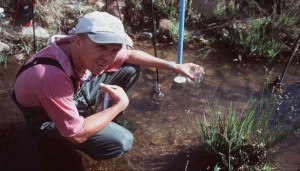In this post, Mirco Bundschuh talks about a recent paper that uncovers the pH-range relevant for surface waters that receive pesticide input in Europe.
The pH of the surrounding medium determines the fate and toxicity of some pesticides, which needs to be considered during the risk assessment of these compounds prior to their market authorization. Thereby, it is reasonable to also consider environmentally relevant pH values. But what does “environmentally relevant” mean? In the context of the pesticide risk assessment, the pH of surface water bodies that actually receive some pesticide input from agricultural sources may be a rational approximation. Following this definition, we compiled pH values from surface water bodies all over Europe but only including those sites that with a documented history of pesticide exposure and thus at least one verified measurement of herbicides, fungicides or insecticides.
With more than 3000 data points we have uncovered that 95% of all European surface water bodies exhibit a rather narrow pH range between 7.0 and 8.5. The observed spatial but also temporal variability is partly triggered by the characteristics of the parental rock material and the photosynthetic activity of algae and macrophytes. Irrespective of these aspects, the environmentally relevant pH range is properly reflected by most standard procedures during the risk assessment. Our publication also provides a solid basis for the selection and justification of pH values during risk assessment as well as academic research.
The paper “Narrow pH range of surface water bodies receiving pesticide input in Europe” was authored by Mirco Bundschuh, David Elsaesser, Ralf Schulz, and colleagues and published in the Bulletin of Environmental Contamination and Toxicology.

